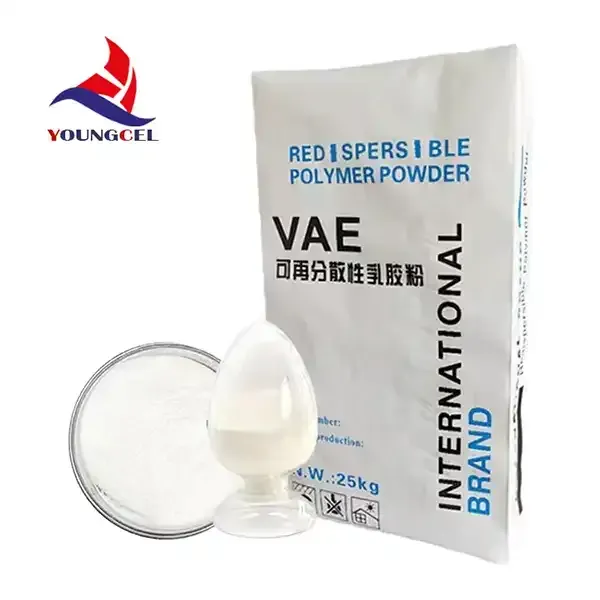Hydroxypropyl Methyl Cellulose (HPMC) An Overview
Hydroxypropyl Methyl Cellulose (HPMC) is a versatile and extensively used cellulose derivative in various industries, including pharmaceuticals, food, cosmetics, and construction. Derived from natural cellulose sources, HPMC is a non-ionic, water-soluble polymer that exhibits unique physical and chemical properties, making it an essential ingredient across multiple applications.
Chemical Composition and Structure
HPMC is produced by the chemical modification of cellulose, a naturally occurring polymer found in the cell walls of plants. The modification process entails the substitution of hydroxyl groups in the cellulose polymer with hydroxypropyl and methyl groups. The degree of substitution and the molecular weight of HPMC can be tailored during manufacturing, allowing for a wide range of functionalities. Generally, the ratio of hydroxypropyl to methyl groups affects the solubility, viscosity, and overall performance of the compound in various formulations.
Key Properties
One of the prime advantages of HPMC is its ability to form clear, viscous solutions in water at room temperature. This property owes itself to the hydrophilic nature of the hydroxypropyl groups, which help enhance water retention and improve adhesion properties. HPMC is compatible with various active pharmaceutical ingredients, making it an excellent binder and film-forming agent in drug formulations. Additionally, HPMC is chemically stable, resistant to oxidation and microbial degradation, and does not gel upon heating, making it suitable for numerous applications.
Pharmaceutical Applications
In the pharmaceutical industry, HPMC is widely utilized as an excipient in tablet and capsule formulations. It serves as a binder and disintegrant, ensuring the uniform distribution of active ingredients and facilitating drug release. HPMC is also pivotal in extended-release formulations due to its gelling ability in the gastrointestinal tract, controlling drug release rates over extended periods. Furthermore, its compatibility with various other pharmaceutical agents enhances its value in formulating complex dosage forms.
hydroxypropyl methyl cellulose (hpmc)

Food Industry Utilization
In the food industry, HPMC is employed as a thickener, stabilizer, and emulsifier. Its ability to retain moisture makes it an essential ingredient in gluten-free products, providing texture and improving shelf life. HPMC is also used in sauces, dressings, and bakery products, where it enhances product stability and mouthfeel. Its safety in consumption, labeled by the FDA as Generally Recognized as Safe (GRAS), makes it a popular choice for food manufacturers looking for natural ingredients.
Cosmetic and Personal Care Products
HPMC finds its way into a plethora of cosmetic and personal care formulations. Its film-forming ability allows for effective use in creams, lotions, and gels, enhancing product viscosity and stability. HPMC is also valued in hair care formulations as a thickening agent, providing desirable texture without compromising product performance. The non-toxic and soothing properties of HPMC further contribute to its appeal in sensitive skin formulations, making it a go-to ingredient for many manufacturers.
Construction Industry Applications
In construction, HPMC is widely regarded for its role as a thickener and water-retention agent in cement-based formulations such as tiles, grouts, and plaster. It assists in enhancing workability and improving adhesion, which contributes to the longevity and durability of construction materials. HPMC also helps in controlling the setting time and contributes to the strength of the finished product.
Conclusion
Hydroxypropyl Methyl Cellulose is an indispensable ingredient across various industries due to its unique properties and versatility. Its contributions in pharmaceuticals, food, cosmetics, and construction underscore its significance in modern formulations. As demands for natural and effective ingredients continue to rise, HPMC stands out as a reliable choice, promising continued growth and innovation within these sectors. With ongoing research and development, HPMC is likely to play an even more prominent role in addressing the evolving needs of diverse industries moving forward.
-
Rdp Powder: Key Considerations for Wholesalers in the Building Materials IndustryNewsJul.08,2025
-
Key Considerations for Wholesalers: Navigating the World of Hpmc - Based ProductsNewsJul.08,2025
-
Hpmc Detergent: Key Considerations for WholesalersNewsJul.08,2025
-
Key Considerations for Wholesalers: China Hpmc For Tile Adhesive, Coating Additives, Concrete Additives, and MoreNewsJul.08,2025
-
Crucial Considerations for Wholesalers: Navigating the World of Construction MaterialsNewsJul.08,2025
-
Key Considerations for Wholesalers Sourcing Additive For Cement, Additive For Concrete, Additive For Putty from Additive Manufacturer Shijiazhuang Gaocheng District Yongfeng Cellulose Co., Ltd.NewsJul.08,2025




